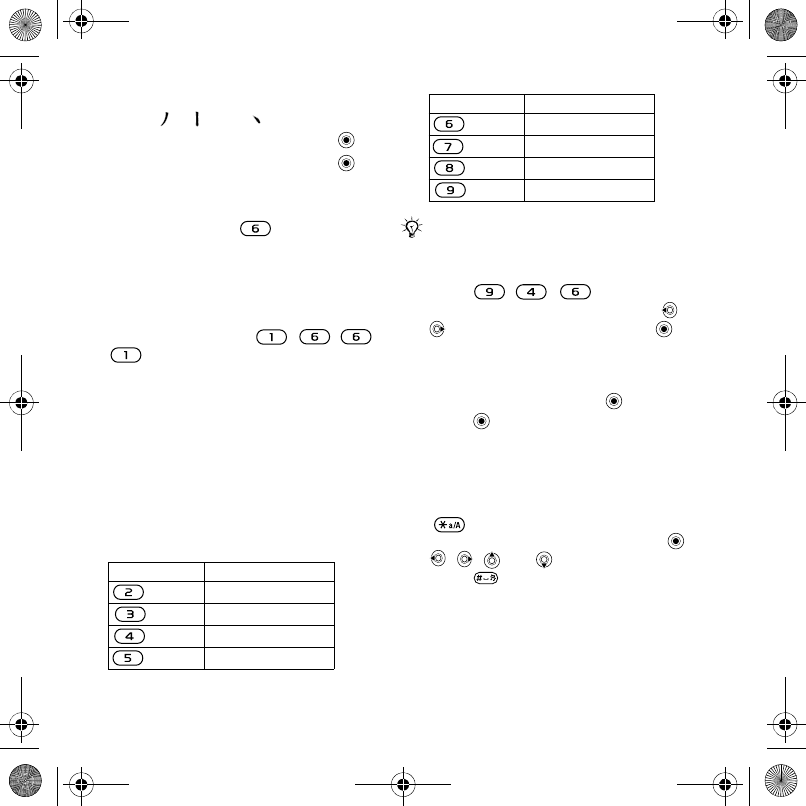User's Manual

18 Entering characters
For example, to enter “
ֵᙃ
”
1 Enter “ ”, “ ” and “ ”.
2 Move the cursor to “ ֵ ”, press .
3 Move the cursor to “ ᙃ ”, press
again to select “ ᙃ ”.
Example of using the wild card key
The wild card key , is used to
supplement unclear strokes in
entering characters. If you want to
enter “Ѧ”, but you only know that “ϔ”
is the first and the last stroke of the
character and that the total number of
strokes is four, enter , , ,
. The character is displayed in the
candidate row.
Pinyin input
Press the keys containing the required
Pinyin letters, and the phone will make
various proposals on the screen,
according to the pronunciation rules
of Mandarin.
Below is the key mapping of Pinyin
letters on the keypad.
For example, to enter “
ֵᙃ
”
1 Press , , .
2 When “xin” is highlighted, press or
and select “ ֵ ”, then press .
(If you want to enter any of the other
suggested Pinyin combinations, scroll
up or down to the desired
combination, then press ).
3 Press again to select “ ᙃ ”, when
“ ᙃ ” is highlighted.
Input punctuation, symbols and
smilies
Under any Chinese input mode, press
to see the table of punctuation
marks, symbols and smilies. Use ,
, , and to make a selection.
Press to enter a space in the text.
Number Key Pinyin Letter
a b c
d e f
g h i
j k l
m n o
p q r s
t u ü
w x y z
On the keypad, the letter ü is replaced
by v.
Number Key Pinyin Letter
=LB8*B3$B(1B$VLDERRN3DJH)ULGD\$XJXVW30










